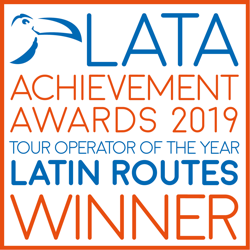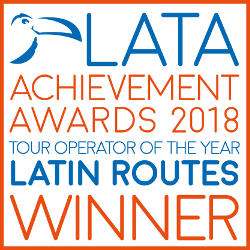Day 1 - San Jose
Upon your arrival at San José international airport, you'll transfer to your hotel. Enjoy the remainder of the day at leisure.
Day 2 - Puerto Caldera (embark your ship)
After a leisurely breakfast, transfer to Puerto Caldera (2-hours) where your vessel awaits. After boarding, you’ll have time to settle into your cabin before participating in important safety briefings. Afterwards, enjoy lunch on board as you sail to nearby Isla Tortuga (Turtle Island), where you can snorkel, swim, paddle or relax. The water is teeming with a dizzying array of tropical fish, big pufferfish, turtles, stingrays, white tip reef sharks, and occasionally dolphins. In Isla Tortuga, you will do your kayak orientation and have your first introductory paddle.
This evening, get to know your fellow expeditioners, expedition team and crew at a welcome dinner to celebrate the start of a thrilling adventure.
Day 3 - Curú National Wildlife Refuge
Curú National Wildlife Refuge is a privately owned and managed nature preserve offering visitors some of the best eco-tourism experiences in Costa Rica. The refuge is the first privately owned refuge in Costa Rica and is an example of a successful sustainable development program, The region offers over 3700 acres of tropical forests, mangrove swamps, and grassy fields sitting right along the coastline. Monkeys are prolific including the native capuchin, spider, and howler monkeys. Located on the southern Nicoya Peninsula of northwestern Costa Rica, the area is teeming with abundant wildlife and hosts one of the most beautiful beaches and protected bays on the Nicoya Peninsula.
Day 4 - Manuel Antonio National Park
Boasting over 100 species of mammals, 184 species of birds and a plethora of diverse flora, Manuel Antonio National Park is a paradise for wildlife lovers. Costa Rica’s star attractions are the two and three-toed sloths, white-faced monkeys and toucans, and these can all be found on hikes that weave through the park. You'll find hiking trails that snake their way through the parkland offering access to rainforest, waterfalls and remote white-sand beaches. From the water, you can enjoy snorkelling, kayak and paddleboard to view the exquisite coral.
Your ship will anchor off the shores of Espadilla Beach and you'll Zodiac to shore for a wet landing. Walk along this soft-sand beach or follow a trail through the rainforest parallel to the beach to get to Playa Manuel Antonio. It’s a short, deep crescent of white sand backed by lush rainforest. The hiking trails in Manuel Antonio National Park offer excellent opportunities to spot monkeys, sometimes sloths, agoutis, armadillos and coatis.
Days 5 & 6 - Osa Peninsula & Gulfo Dulce
Over the next two days, you'll explore the untamed Osa Peninsula, considered by National Geographic to be ‘one of the most biologically intense places on earth’. The crown jewel of Costa Rica's park system, Corcovado National park is the country's largest and one of the most remote parks in Costa Rica. It is home to the largest and only tropical primary lowland rainforest in the world, provides habitat for a plethora of endangered plant and animal species including the scarlet macaw, various frogs, and the tapir - the largest terrestrial mammal in Central and South America. In order to conserve the integrity of the national park, restrictions are placed on the capacity of daily visitors permitted in the park. You'll hike through a private conservation reserve adjoining the national park looking not only for wildlife but also to experience the incredible wet tropical rainforest filled with tall trees measuring over 60 m /197 ft, lianas, epiphytes, palms, gingers and orchids.
The following day, you will enter Gulfo Dulce or Sweet Gulf. The large bay hugs pristine beaches, rivers and tall evergreen forest, a protected area known as the Golfo Dulce Forest Reserve. As one of the wettest places on Earth with over 200 inches/5000 mm of rainfall a year, the Golfo Dulce Forest Reserve boasts some of the tallest ancient trees. Established in 1979, the Golfo Dulce Forest Reserve was created to protect the lowland forested areas that surround the gulf – the reserve also connecting other national parks in the area. You will visit a private reserve called Casa Orquideas (Orchid House), akin to a botanical garden adjoining Piedras Blancas National Park. A hike in Casa Orquideas allows you to appreciate colourful orchids, heliconias, palms, and all the tropical wildlife such as toucans, macaws, tanagers, and honeycreepers that feed on the flowers.
Day 7 & 8 - Coiba National Park
Leaving Costa Rica behind, you'll then sail on to the islands of Coiba National Park, located off the southwest coast of Panama and a UNESCO place of outstanding universal value. The national park protects Coiba Island, 38 smaller islands and the surrounding marine areas within the Gulf of Chiriqui. Protected from the cold winds and effects of El Niño, Coiba’s Pacific tropical moist forest maintains exceptionally high levels of endemism of mammals, birds and plants due to the ongoing evolution of new species. It is also the last refuge for a number of threatened animals such as the crested eagle. The property is an outstanding natural laboratory for scientific research and provides a key ecological link to the Tropical Eastern Pacific for the transit and survival of pelagic fish and marine mammals.
Due to Coiba Island previously serving as a penal colony, access to the island was heavily restricted. As a result, nearly 80 per cent of the islands' natural resources have remained untouched and flourished because of limited human contact.
Day 9 - Pearl Islands
The Pearl Islands of Panama is an archipelago located in the North Pacific Ocean in the Gulf of Panama, covering around 250 small islands, and are most famous for their spectacular and tranquil white-sand beaches, untouched forests, and colourful coral reefs offshore – ideal for diving, snorkelling and kayaking.
The largest of the islands is Isla Del Rey but Isla Contadora is the only destination in the archipelago that is equipped with enough infrastructure to attract a large number of visitors. In addition to Isla Contadora, you'll visit a few nearby islands including Bartolome to enjoy some aquatic activities
Day 10 - Emberá Mogue Village, Darién, Panama
There are few places on Earth like the Darién - a region of great interest to biologists, anthropologists, and a notorious route for smuggling narcotics. It is a place of immense natural beauty, where life in the rainforest has remained relatively unchanged for the indigenous communities that live there.
You will visit Mogue, an Emberá community in the Darién, a remote destination where you will be rewarded with a unique look at a traditional Emberá village. The village is accessible after a 30-minute Zodiac ride (during high tide) up the scenic and swampy Mogue River surrounded by rainforest. You may see birds such as willets, whimbrels, and laughing falcons. Nearing the village, you will be warmly welcomed by the community leaders who will meet the Zodiacs and personally transfer you to their village using their traditional boats
Day 11 - Panama City
Today you'll arrive in Panama City, the capital of Panama where you'll have the choice of two excursions. Enjoy a visit to the Miraflores Visitor Centre and Colonial City Tour at “Casco Viejo or a Gatun Lake Expedition & Walking Tour at “Casco Viejo”.
Day 12 - Panama Canal Crossing
Crossing the Panama Canal will be a highlight for many. Each year, over a million people visit the canal to witness this engineering marvel at work. Starting in the Pacific Ocean, you will be able to admire the Bay of Panama and Panama City’s splendorous skyline before passing under the ‘Bridge of the Americas’. The vessel will then transit through the first set of locks, the Miraflores Locks, where it will be lifted 16 metres in two distinct steps. Next, your ship will enter Miraflores Lake, which is a small artificial body of freshwater that separates Pedro Miguel Locks from Miraflores Locks. The vessel will transit through Pedro Miguel Locks, which is one of the two sets of locks on the Pacific side, and here the vessel is lifted 9 metres in one step. After exiting Pedro Miguel locks, your ship will travel through the Gaillard Cut, where the Chagres River flows into the canal. The Gaillard Cut (also known as Culebra Cut because its curves resemble a snake) is one of the main points of interest for visitors because it was carved through the Continental Divide and this section of the canal is full of history and geological value.
Day 13 - At sea
Sail to Cartagena de Indias, Colombia. While at sea, enjoy a few final presentations from the team of experts. Or simply relax and enjoy one of the many public spaces onboard the ship.
Day 14 - Cartagena de Indias
Disembark in Cartagena de Indias, Colombia, inscribed by UNESCO as a site of Outstanding Universal Heritage. The city’s rich history, diverse culture and energy captivates visitors with its vibrancy, Afro-Caribbean character, indigenous influences and some of the best-preserved colonial architecture in all of South America.
Day 15 - Disembark your ship
After breakfast, bid farewell to your fellow travellers and make your way to the airport for your onward journey.


















